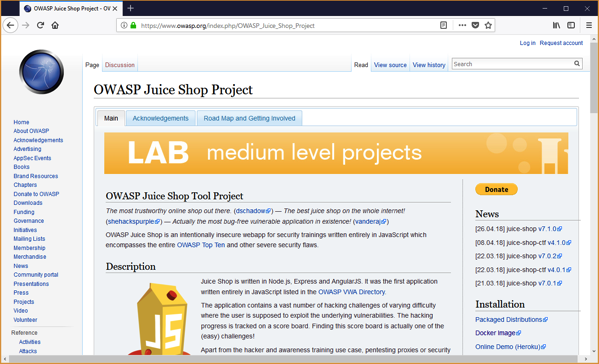I am often asked the question by clients and students where people can go to learn hacking techniques for application security. For years, we have had many purposely vulnerable applications available to us. These applications provide a safe environment for us to learn more about hacking applications and the vulnerabilities that are exposed without the legal ramifications. In this post I want to show you how simple it is to install the OWASP Juice Shop application using a Docker container. … [Read more...] about Installing OWASP JuiceShop with Docker
vulnerability
ImageMagick – Take-aways
Do your applications accept file uploads? More specifically, image uploads? Do you use a site that allows you to upload images? If you haven't been following the news lately, there was recently a few vulnerabilities found in the ImageMagick image library. This library is very common in websites to perform image processing. The vulnerability allows remote code execution (RCE) on the web server, which is very dangerous. For more specific details on the vulnerability itself, check out this … [Read more...] about ImageMagick – Take-aways
Reliance on 3rd Party Components
It was just recently announced that Apple will no longer be supporting QuickTime for Windows. Just like any other software, when support has ended, the software becomes a security risk. As a matter of fact, there are current known vulnerabilities in QuickTime that will never get patched. The Department of Homeland Security has an alert recommending removal of QuickTime for Windows. For users, it may seem simple: Uninstall QuickTime from your Windows system. But wait.. what about software … [Read more...] about Reliance on 3rd Party Components
Introduction to Penetration Testing for Application Teams
In this presentation, James Jardine focuses on educating application teams on what a penetration test is and how to extract the most value from it. Application teams learn how to participate in the engagement and better understand the report. You can watch the recorded session at any time at: https://youtu.be/I1PukF8Glh0 https://youtu.be/I1PukF8Glh0 … [Read more...] about Introduction to Penetration Testing for Application Teams
What is a Penetration Test
You spend all day looking at requirements, creating functionality and doing some testing of the code you just created. You have been working for months on this application making sure it worked as expected. The testers have been diligently working to ensure that the requirements have been fulfilled and the application will work as expected and allow the end users the capability to solve a specific set of tasks. Then it happens... You find out that a penetration test is coming. … [Read more...] about What is a Penetration Test
Verizon Email API Insecure Direct Object Reference Thoughts and Takeaways
It was recently announced that there was a flaw identified (and since fixed) in the Verizon API that allowed access to Verizon customer email accounts. The way this worked was that there was an ID parameter with the email account's user ID specified. If a user supplied a different user's ID name, that user's email account would be returned. This is known as an Insecure Direct Object Reference. It was also found that the attacker could not only read another user's email, but also send email … [Read more...] about Verizon Email API Insecure Direct Object Reference Thoughts and Takeaways
